Providing Best Services in Huntsville, AL
Providing Best Landscaping Services in Huntsville, AL



.webp)
How To Make Your Backyard Look Professionally Landscaped?
To make your backyard look professionally landscaped, start by defining clear edges for lawns and garden beds, since clean lines create structure. Add layers with shrubs, perennials, and groundcovers for depth. Use mulch for a polished finish and proper moisture control. Finally, balance plants with hardscape elements like pathways or lighting to tie the space together.
Professional landscaping increases home value by 15-20% according to the American Society of Landscape Architects. The transformation involves creating clean lines, establishing layered plantings, defining functional spaces, and building year-round structural interest. Modern landscape design emphasizes sustainability, water conservation, and low-maintenance plant selections that thrive in local climate conditions.
What Are The Essential Planning Steps For Professional Landscaping?
Professional landscaping begins with creating a detailed site plan before purchasing any plants or materials. Landscape designers measure existing features, analyze sun patterns throughout different seasons, and divide outdoor spaces into functional zones that serve specific purposes.
Site Analysis Requirements
Comprehensive site analysis includes documenting sun exposure patterns during morning, afternoon, and evening hours across all seasons. Professional designers map existing trees, structures, utilities, and property boundaries to understand spatial relationships and design constraints. Drainage patterns receive careful attention since water management affects plant health and structural stability.
Soil testing reveals pH levels, nutrient content, and drainage characteristics that determine plant selection success. Clay soils require different plant choices than sandy soils, and understanding these differences prevents costly plant failures. Many homeowners skip this step and face ongoing struggles with plants that cannot thrive in their specific soil conditions.
Design Principles And Proportions
The golden ratio principle guides professional design proportions at 1.618 to 1. This mathematical relationship creates visually pleasing layouts where element ratios follow natural patterns found in nature. Professional designers apply golden ratio principles to pathway widths, planting bed proportions, and spatial relationships between different landscape features.
Plant groupings follow the rule of odd numbers for natural appearance. Groups of 3, 5, or 7 plants create stronger visual impact than even-numbered arrangements. This principle stems from how plants naturally colonize areas in nature, where random seeding creates irregular groupings rather than formal patterns.
Functional Zone Development
Functional zoning divides outdoor spaces into specific activity areas such as dining zones, play areas, meditation spaces, and utility zones. Each zone receives appropriate plant selections, hardscape materials, and lighting designed for its intended use. Professional designers consider traffic flow between zones and create smooth transitions that guide movement through the landscape.
Color theory principles guide seasonal plant selection and bloom timing coordination. Professional landscapes incorporate plants that provide color progression throughout growing seasons rather than concentrating all color in single periods. Spring bulbs transition to summer perennials, followed by fall foliage displays and winter structural interest from evergreen plants and ornamental grasses.
How Do You Create Professional Foundation Elements?
Foundation elements provide permanent structure that remains attractive year-round through all weather conditions. These hardscape features include pathways, edging systems, retaining walls, water features, and outdoor lighting installations that create the framework for plant displays.
Lawn Establishment And Maintenance
Lawn maintenance delivers the highest ROI at 217% according to the National Association of Realtors. Professional-quality lawns require regular mowing with sharp blades, consistent watering schedules, appropriate fertilization timing, and systematic weed control programs. Grass varieties must match local climate conditions and intended usage patterns.
Edge definition between lawn areas and planting beds creates immediate visual impact that separates amateur from professional installations. Sharp, clean lines prevent grass invasion into flower beds while providing clear visual boundaries that organize the landscape composition. Professional edge installation uses specialized tools that create consistent depth and width measurements.
Hardscape Integration
Hardscaping projects yield 20-30% return on investment based on Angi.com research data. Simple hardscape additions include natural stone edging, decorative gravel pathways, permeable paver patios, and low retaining walls that create level planting areas on sloped terrain.
Pathway design considers both function and aesthetics while connecting different landscape zones through logical circulation patterns. Professional pathways incorporate proper base preparation, adequate width for comfortable passage, and materials that complement architectural styles. Curved pathways create more interesting visual experiences than straight lines while accommodating natural topography.
Lighting And Water Features
Landscape lighting adds $2,500 to home value with 59% ROI according to NAR studies. LED pathway lights, accent spotlights, and decorative string lighting extend outdoor usability after dark while highlighting architectural features and specimen plants. Professional lighting design creates layers of illumination at different heights and intensities.
Water feature integration adds sensory appeal through sound and movement while creating focal points that draw attention to specific landscape areas. Simple water features like fountains or small ponds provide wildlife habitat and cooling effects during hot weather. Professional water feature installation requires proper electrical connections and circulation systems that prevent stagnation.
Retaining walls serve both functional and aesthetic purposes by creating level planting areas on slopes while preventing soil erosion. Natural stone, concrete blocks, or timber construction materials must match existing architectural elements and local building codes. Proper drainage behind retaining walls prevents structural failure from hydrostatic pressure.
Which Plants Create Professional Landscape Layers?
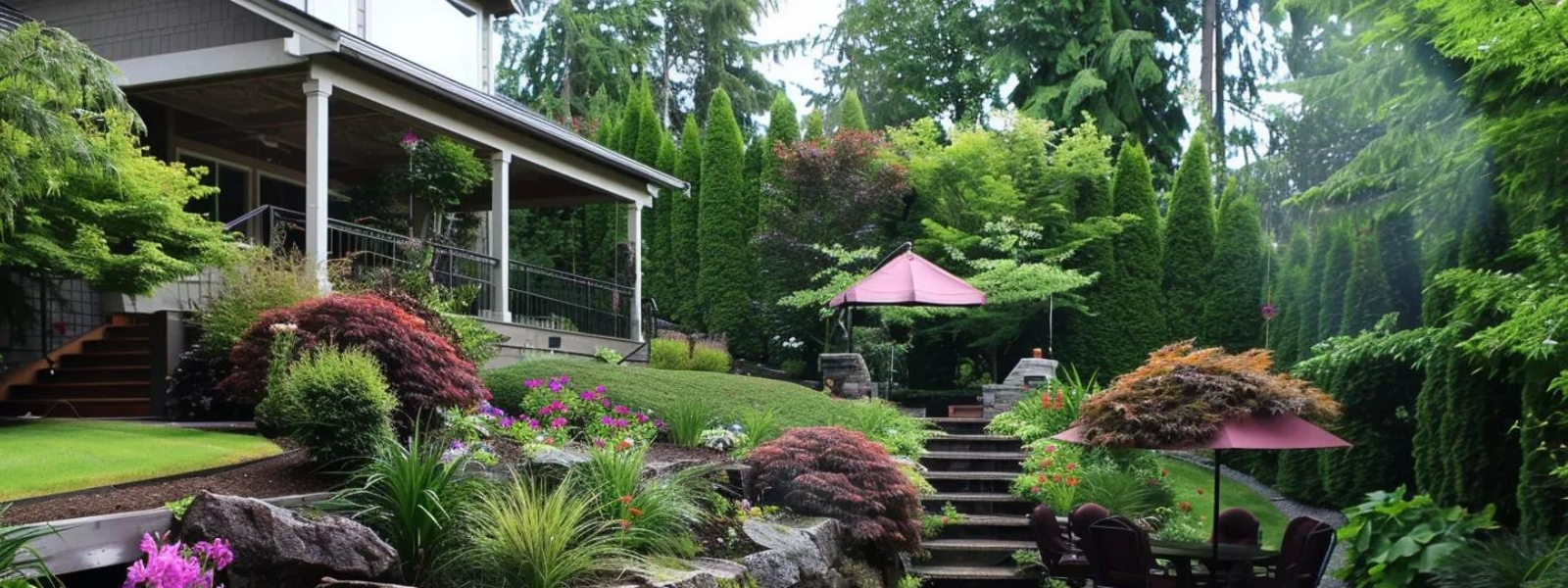
Professional plant selection follows the three-layer principle: canopy, understory, and ground level coverage. Virginia Tech Department of Horticulture research shows plant size and design sophistication contribute most to home value increases of up to 42%.
Canopy Layer Design
Canopy layer plants include trees and large shrubs exceeding 6 feet in mature height. Examples include oak trees, maple trees, evergreen pines, large rhododendrons, and specimen conifers. Canopy plants provide shade, privacy screening, wind protection, and vertical structure that anchors landscape compositions. Tree placement requires consideration of mature size, root spread patterns, and utility line clearances.
Specimen tree selection focuses on multi-season interest through spring flowers, summer foliage, fall color changes, and winter bark texture or structure. Professional designers choose trees that provide multiple aesthetic benefits rather than single-season displays. Native tree species typically perform better than exotic varieties while supporting local wildlife populations.
Understory Plant Selection
Understory layer contains medium plants measuring 2-6 feet in mature height. This layer includes flowering shrubs like azaleas and hydrangeas, ornamental grasses such as fountain grass and feather reed grass, and structural perennial borders. Understory plants create visual transition between tall canopy elements and low ground coverage.
Flowering shrub selection emphasizes bloom time diversity to extend color displays throughout growing seasons. Early spring bloomers like forsythia transition to summer-flowering spiraea and fall-blooming asters. Evergreen shrubs like boxwood and holly maintain structure during winter months when deciduous plants lose foliage.
Ornamental grasses add movement, texture contrast, and seasonal interest through seed head development and winter persistence. Professional designers use grasses as architectural elements that provide vertical accents and softening effects around hard landscape features. Grass placement considers mature size and spread patterns to prevent overcrowding.
Ground Level Coverage
Ground layer consists of plants under 2 feet including perennials, annuals, and spreading groundcovers. Examples include hostas, daylilies, coral bells, ajuga, and seasonal annual displays. Ground layer plants provide color, texture variation, and coverage that suppresses weed growth while completing the layered composition.
Perennial selection emphasizes long bloom periods, disease resistance, and adaptability to local growing conditions. Professional installations combine early, mid, and late-season bloomers to maintain continuous color displays. Foliage plants like hostas and heuchera provide texture and color when flowers are not present.
Plant spacing follows mature size requirements to prevent overcrowding and competition for resources. Proper spacing reduces maintenance needs, improves air circulation that prevents disease problems, and allows natural plant development without constant pruning. Professional spacing charts guide placement decisions based on specific plant varieties and growing conditions.
Evergreen plants provide year-round structure, color, and privacy screening. Strategic placement of boxwood, holly, juniper, and evergreen grasses maintains visual interest during winter months when deciduous plants are dormant. Evergreen selection considers mature size, growth rate, and environmental tolerances.
Color coordination throughout the plant palette creates cohesive designs that avoid chaotic appearances. Professional designers limit color palettes to 3-4 main colors repeated throughout the landscape rather than using every available flower color. Foliage color variations provide subtle contrast without overwhelming visual impact.
What Maintenance Practices Keep Landscapes Looking Professional?
Regular maintenance delivers 104% ROI according to National Association of Realtors data analysis. Professional appearance requires consistent weekly tasks, monthly assessments, and seasonal care routines that address plant health, aesthetic appeal, and structural integrity.
Weekly And Monthly Care
Weekly maintenance tasks focus on immediate visual impact through grass mowing with consistent height settings, edge trimming around walkways and planting beds, and deadheading spent flowers to encourage continued blooming. Professional mowing techniques include overlapping passes, alternating direction patterns, and proper blade sharpness maintenance.
Weed control requires constant attention during growing seasons since weeds compete with desirable plants for water, nutrients, and space. Professional weed management combines pre-emergent herbicide applications, manual removal of established weeds, and dense plant coverage that naturally suppresses weed germination. Mulch application provides additional weed suppression while improving soil moisture retention.
Monthly maintenance involves pruning dead or damaged plant material, refreshing mulch in high-traffic areas, fertilizing according to specific plant requirements, and monitoring irrigation system performance. Professional pruning techniques consider natural plant growth habits and timing requirements for different species.
Mulching And Edge Maintenance
Mulch application creates unified appearance across all planting beds while providing functional benefits. Organic mulch materials like shredded bark or wood chips suppress weed growth, retain soil moisture, moderate soil temperatures, and decompose to improve soil structure. Professional mulch application maintains 2-3 inch depth while avoiding direct contact with plant stems.
Clean edge lines between lawn and planting beds create immediate visual impact that distinguishes professional installations. Metal edging, natural stone borders, or concrete mow strips maintain permanent separation while preventing grass invasion into flower beds. Professional edge installation uses consistent depth measurements and smooth curves that complement landscape design.
Seasonal Care Programs
Seasonal maintenance schedules align with natural plant growth cycles and local climate patterns. Spring tasks include pruning summer-flowering shrubs, dividing overgrown perennials, and applying pre-emergent herbicides before weed seeds germinate. Fall landscaping requires different approaches including leaf removal, late-season fertilization, and winter protection installation.
Irrigation management balances water conservation with plant health requirements through efficient scheduling, proper sprinkler placement, and moisture monitoring systems. Professional irrigation design zones plants with similar water requirements together while incorporating weather-based controllers that adjust watering schedules based on rainfall and temperature conditions.
Plant health monitoring identifies pest problems, disease symptoms, and nutrient deficiencies before they cause significant damage or plant loss. Professional monitoring includes regular inspection of foliage color, growth patterns, and pest activity levels. Early intervention prevents minor problems from becoming major issues requiring expensive treatments or plant replacement.
How Much Should You Budget For Professional Results?
The American Society of Landscape Architects recommends spending 5-10% of home value on landscaping projects for optimal return on investment. Phased installation spreads costs over multiple years while building comprehensive design that develops and matures over time.
Budget Allocation Strategies
Budget allocation should prioritize foundation elements like lawn establishment, basic hardscaping, and structural plantings before adding decorative features or seasonal displays. Professional budget planning considers both initial installation costs and ongoing maintenance requirements to prevent financial surprises.
High-impact, budget-conscious improvements focus on changes that provide maximum visual improvement for minimal investment. Fresh mulch application costs $100-300 but immediately improves appearance across entire landscape. Solar pathway lighting installation costs $75-200 while extending usability and adding security benefits.
Plant Investment Strategies
Perennial plants provide long-term value compared to annual flowers that require yearly replacement. Black-eyed Susans, purple coneflowers, daylilies, and ornamental grasses return each year without replanting costs while increasing in size and impact over time. Initial perennial investment costs more than annuals but provides better long-term value.
DIY installation reduces labor costs while providing personal satisfaction and learning opportunities. Simple projects like mulch application, annual planting, and basic maintenance tasks suit most homeowner skill levels. Complex projects involving electrical work, major grading, or structural installations require professional expertise to prevent costly mistakes.
Material selection affects both initial costs and long-term maintenance requirements. Premium materials like natural stone cost more initially but last longer and require less maintenance than cheaper alternatives. Professional hardscaping choices balance cost considerations with durability and aesthetic appeal.
Seasonal purchasing timing affects plant and material costs significantly. End-of-season sales provide opportunities to purchase plants at reduced prices for fall installation or spring planting. Professional landscapers often purchase materials during off-peak seasons to reduce project costs.
Container gardening provides flexibility and immediate impact for renters or homeowners wanting temporary solutions. Professional container displays use proper drainage, appropriate plant combinations, and strategic placement to create focal points that complement permanent landscape features.
When Should You Hire Professional Help?
Professional installation becomes necessary for complex projects requiring specialized skills, equipment, or permits. Major grading work, electrical installations, large tree planting, and structural modifications exceed typical DIY capabilities while requiring knowledge of local building codes and safety regulations.
Licensing And Expertise Requirements
Licensed landscape contractors must pass examinations covering soils, grading, and plant knowledge according to state licensing requirements. Professional expertise reduces project risks, prevents costly mistakes, and provides warranty protection for materials and installation quality.
Drainage solutions require professional assessment since water management affects both landscape health and foundation protection. Standing water problems can damage both landscaping investments and home structures without proper correction through grading, drainage systems, or soil amendments.
Technical Installation Services
Electrical work for permanent lighting installations, irrigation systems, and water features requires licensed electrician involvement to meet safety codes and insurance requirements. Professional electrical installation prevents fire hazards, protects proper operation, and maintains warranty coverage on expensive equipment.
Large tree installation involves heavy equipment operation, proper planting techniques, and understanding of root ball handling that affects long-term tree survival. Professional tree planting includes soil preparation, proper planting depth, staking requirements, and establishment care programs that maximize investment protection.
Design consultation services provide professional expertise for homeowners planning DIY installation projects. Professional landscape design creates comprehensive plans that guide phased installation while preventing common placement mistakes and plant selection errors.
Soil analysis and amendment recommendations require professional testing and interpretation of results. Soil problems including pH imbalances, poor drainage, or contamination issues affect plant selection success and require specific correction methods.
How Do You Maintain Four-Season Interest?
Professional landscapes include plants that provide visual appeal throughout all seasons rather than concentrating interest in single periods. Spring bulbs, summer perennials, fall foliage displays, and winter structural elements create year-round attraction that maintains property value and personal enjoyment.
Spring And Summer Planning
Spring interest begins with early bulbs like crocuses and daffodils that emerge before trees leaf out, followed by flowering trees like dogwoods and redbuds. Professional spring planning includes bulb planting in fall for following year displays and early-season maintenance that prepares plants for growing season.
Summer displays emphasize heat-tolerant perennials, flowering shrubs, and foliage plants that maintain appearance during stressful weather conditions. Professional summer management includes proper watering schedules, pest monitoring, and deadheading practices that maintain continuous bloom cycles.
Fall And Winter Interest
Fall color development requires planning deciduous tree and shrub selections for autumn foliage displays while incorporating late-blooming perennials like asters and mums. Professional fall maintenance includes leaf management, late-season pruning, and winter preparation activities.
Winter interest depends on evergreen plants, ornamental grasses with persistent seed heads, trees with interesting bark patterns, and hardscape features that remain attractive during dormant seasons. Professional winter planning includes plant selections that provide structure and color when most plants are dormant.
Seasonal planting schedules maximize plant establishment success through timing installation when environmental conditions favor root development:
• Spring: Cool-season annuals and perennial division projects • Fall: Tree and shrub planting for root establishment before summer stress
Plant selection diversity creates overlapping bloom periods and foliage interest that prevents gaps in landscape appeal. Professional plant combinations consider bloom timing, mature size, cultural requirements, and maintenance needs to create sustainable displays.
Problem identification and prompt correction prevent small issues from becoming expensive repairs or plant replacement needs. Regular inspection schedules catch pest infestations, disease symptoms, and structural damage during early stages when intervention costs less and success rates are higher.
What Return On Investment Can You Expect?

Professional landscaping increases property value by up to 20% according to National Association of Realtors research data. Well-designed landscapes can yield ROI between 200-400% based on real estate expert analysis depending on project scope, installation quality, and local market conditions.
Property Value Enhancement
Mature trees add $1,000-10,000 to property value according to the Council of Tree and Landscaping Appraisers. Strategic tree placement also reduces energy costs by up to 25% through natural cooling effects and wind protection that decreases heating and cooling requirements.
Curb appeal improvements affect buyer interest and sale prices since exterior appearance creates first impressions that influence purchasing decisions. Professional landscaping attracts more potential buyers, reduces time on market, and supports higher asking prices in competitive real estate markets.
Specific Feature Returns
Irrigation systems provide 83% ROI while reducing water consumption and maintenance requirements. Smart controllers save up to 7,500 gallons annually and reduce utility bills by $400+ per year through weather-based watering adjustments and zone-specific programming.
Fire pits and outdoor entertainment features deliver 56-70% ROI through creation of functional outdoor living spaces that extend home square footage and appeal to potential buyers seeking outdoor lifestyle amenities.
Low-maintenance landscape features appeal to busy homeowners and potential buyers who want attractive outdoor spaces without extensive maintenance commitments. Professional design approaches incorporate drought-tolerant plants, efficient irrigation systems, and hardscape features that reduce ongoing care requirements.
Market research shows increased buyer interest in sustainable landscape features including native plant selections, water-efficient irrigation systems, and organic maintenance practices. Professional sustainable design reduces environmental impact while lowering maintenance costs and water usage.
Investment timing affects return calculations since landscape improvements provide immediate visual impact and continue appreciating as plants mature and establish. Professional installation quality affects longevity and maintenance requirements that influence long-term investment performance.
Frequently Asked Questions
How Long Does It Take To Create A Professional Looking Landscape?
Complete landscape transformation typically requires 6-12 months depending on project scope and seasonal timing. Foundation elements like hardscaping and major plantings install within 2-4 weeks, while plants need full growing season to establish mature appearance.
What Is The Biggest Mistake Homeowners Make With DIY Landscaping?
Plant spacing errors create the most common problems in amateur installations. Homeowners plant too closely for immediate fullness, causing overcrowding, poor air circulation, and increased maintenance as plants compete for resources and space.
How Much Does Professional Landscape Design Cost?
Professional landscape design services range from $1,500-5,000 for residential properties depending on property size and project complexity. Design-only consultations cost $500-1,500 and provide installation plans for DIY implementation.
Which Plants Provide The Best Return On Investment?
Native trees and evergreen shrubs provide highest ROI through low maintenance requirements, energy savings, and property value increases. Mature shade trees add $1,000-10,000 to home value while reducing cooling costs by 25%.
When Is The Best Time To Start Landscaping Projects?
Fall installation timing provides optimal plant establishment conditions with cooler temperatures and increased rainfall. Spring ranks second for planting timing, while summer installations require intensive watering and plant stress management.
Can You Create Professional Results On A Small Budget?
Budget-conscious homeowners achieve professional results through phased installation, DIY labor, seasonal plant purchases, and focus on high-impact improvements like mulching, edging, and strategic plant placement that maximize visual improvement per dollar invested.
Final Thoughts
Professional landscaping combines design principles, plant knowledge, and maintenance practices to create valuable outdoor spaces that provide both immediate enjoyment and long-term financial returns. Success requires understanding local growing conditions, proper plant selection, and consistent maintenance routines that preserve investment quality and visual appeal throughout all seasons. Comprehensive landscape planning addresses both aesthetic goals and practical requirements while maximizing return on investment through strategic feature selection and professional installation techniques.
Stay Connected and Inspired
Get the latest landscaping tips, seasonal care guides, and exclusive offers delivered straight to your inbox. Don’t miss out on expert advice and ideas to transform your outdoor spaces.
Sign Up for Our Newsletter Today!


Your Next Idea Awaits
Stay inspired with our latest landscaping tips and trends.
.webp)
.webp)

.webp)
.webp)
.webp)
.webp)
.webp)

.webp)



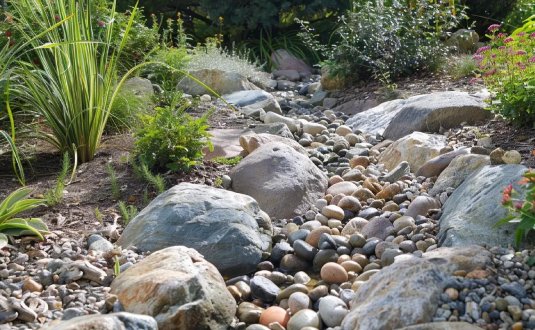

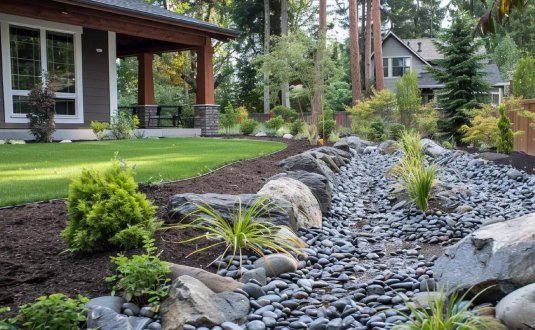
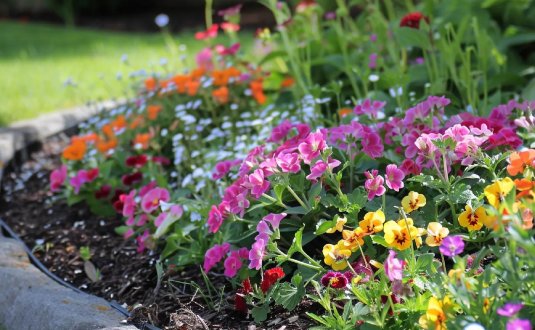
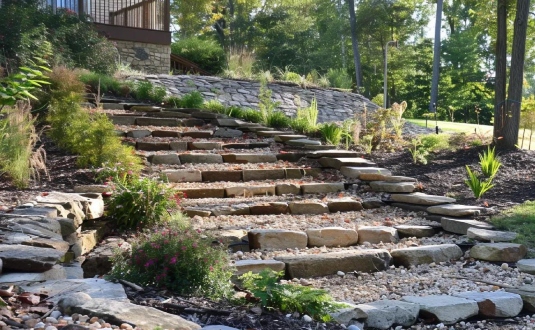
.webp)
.webp)





